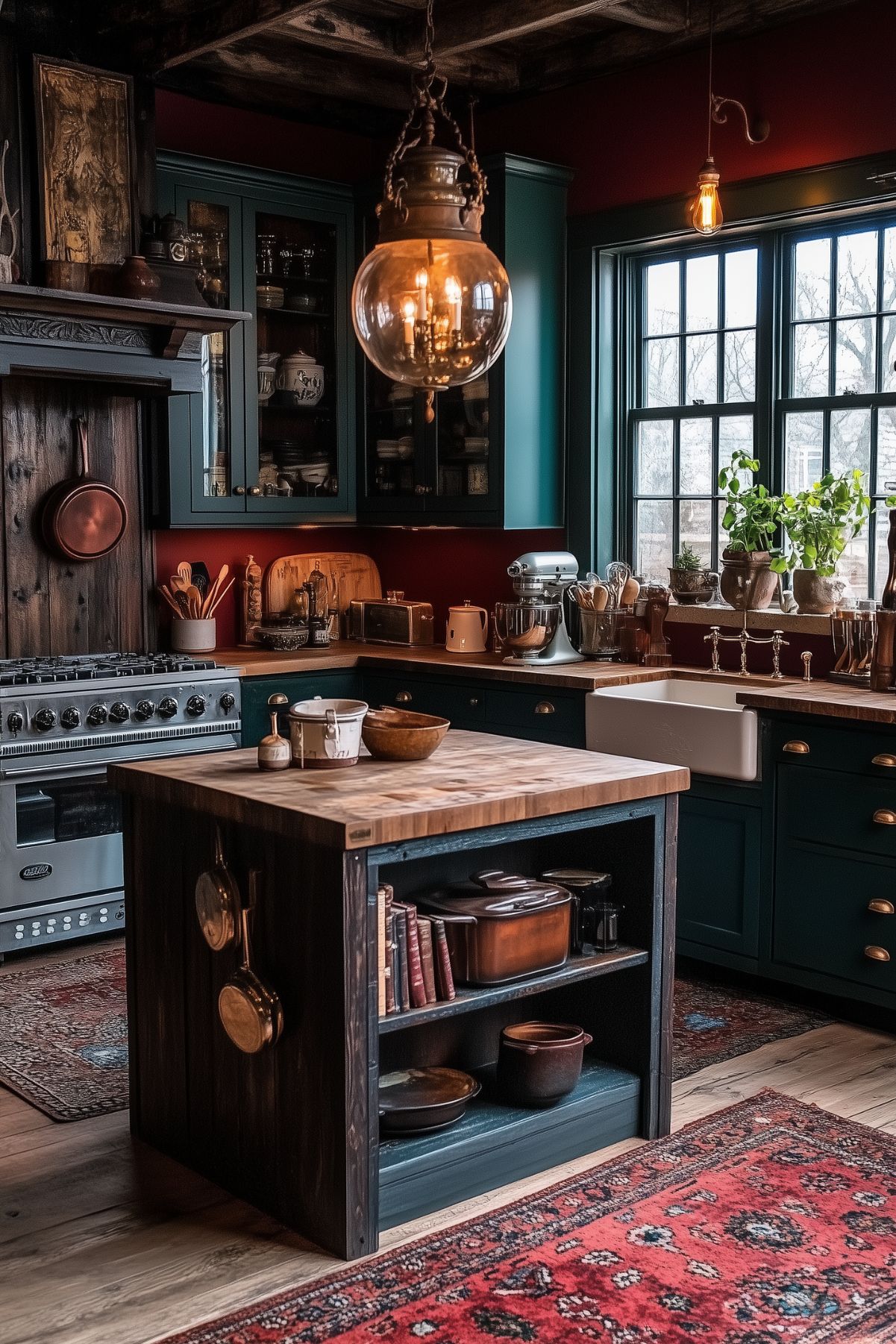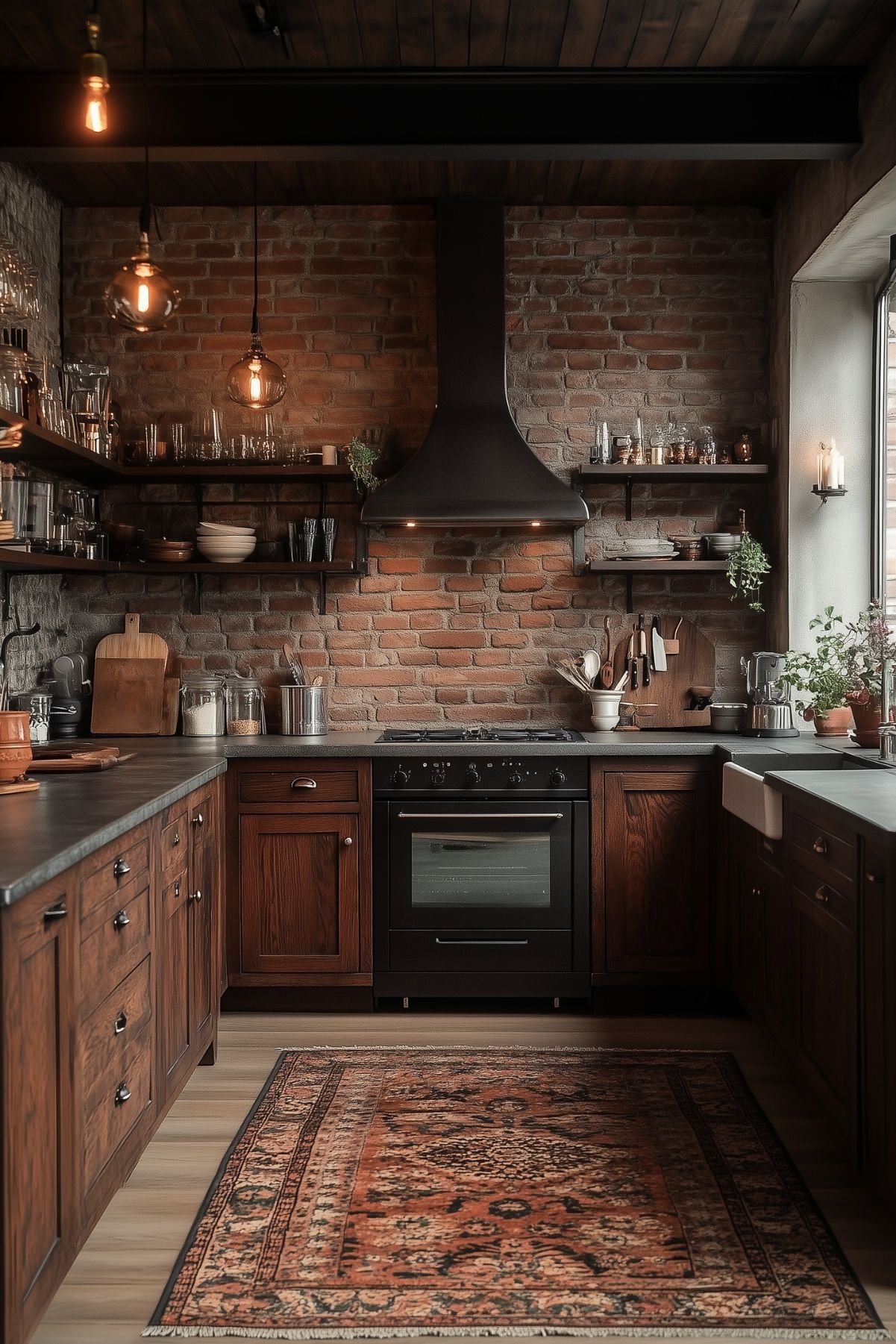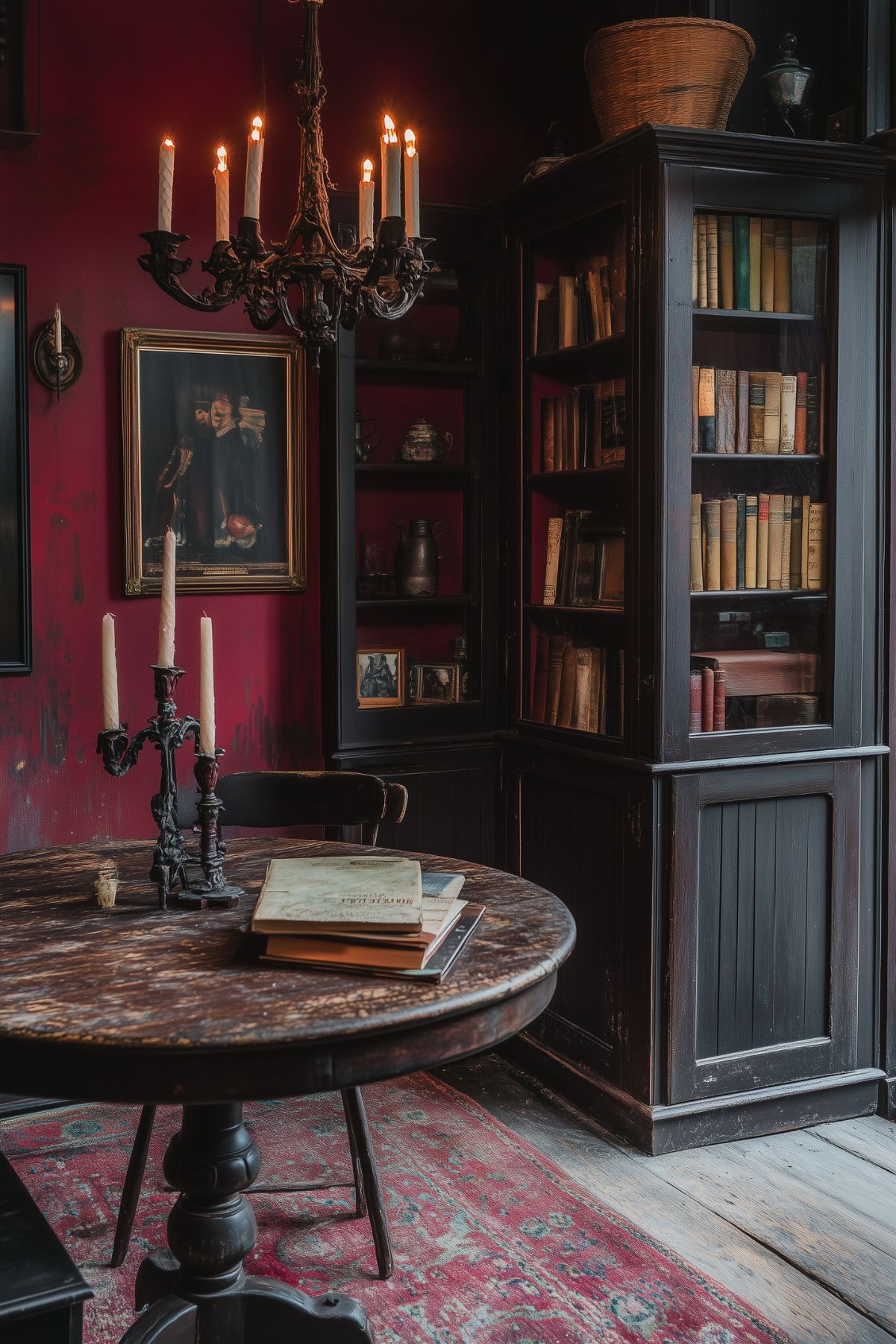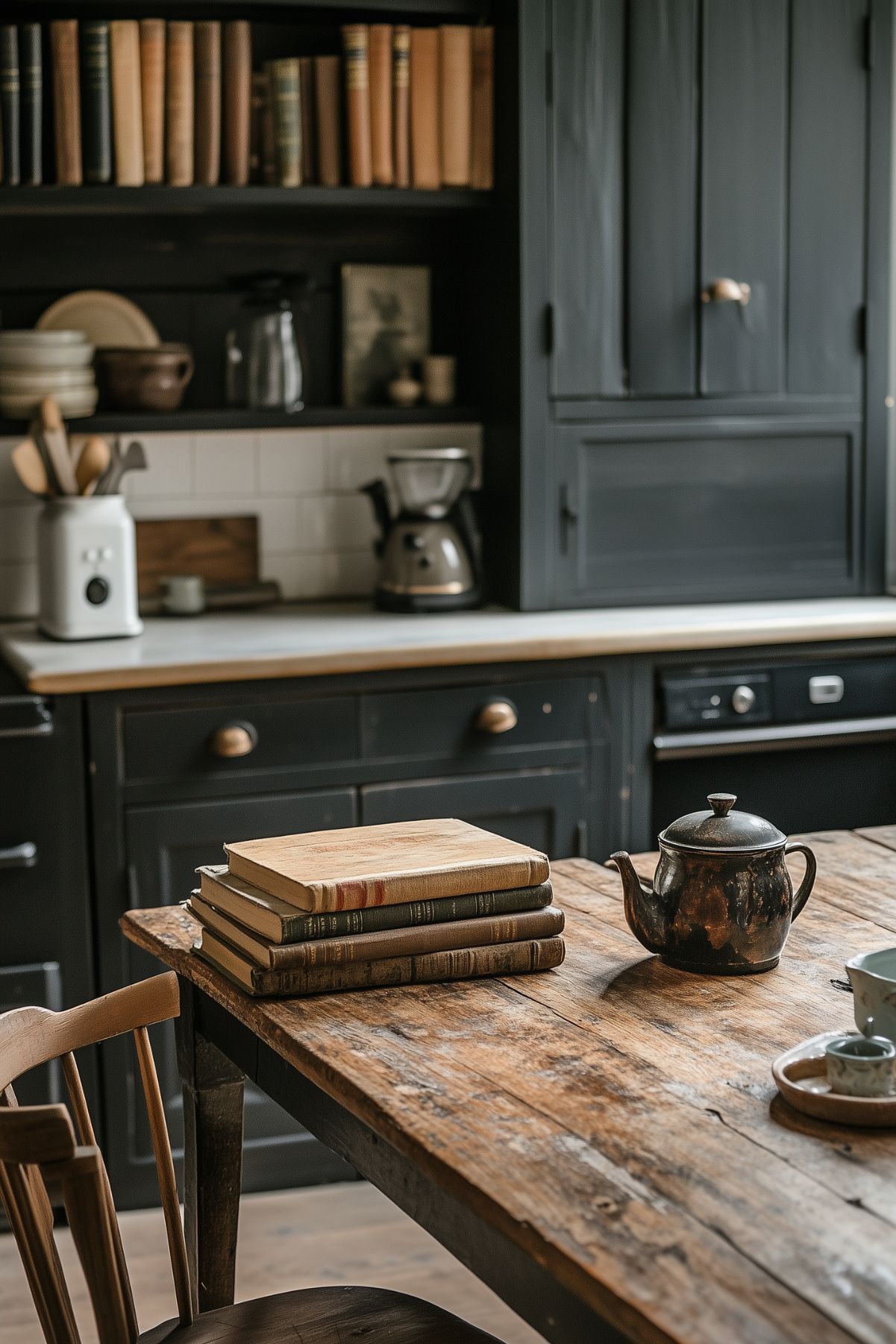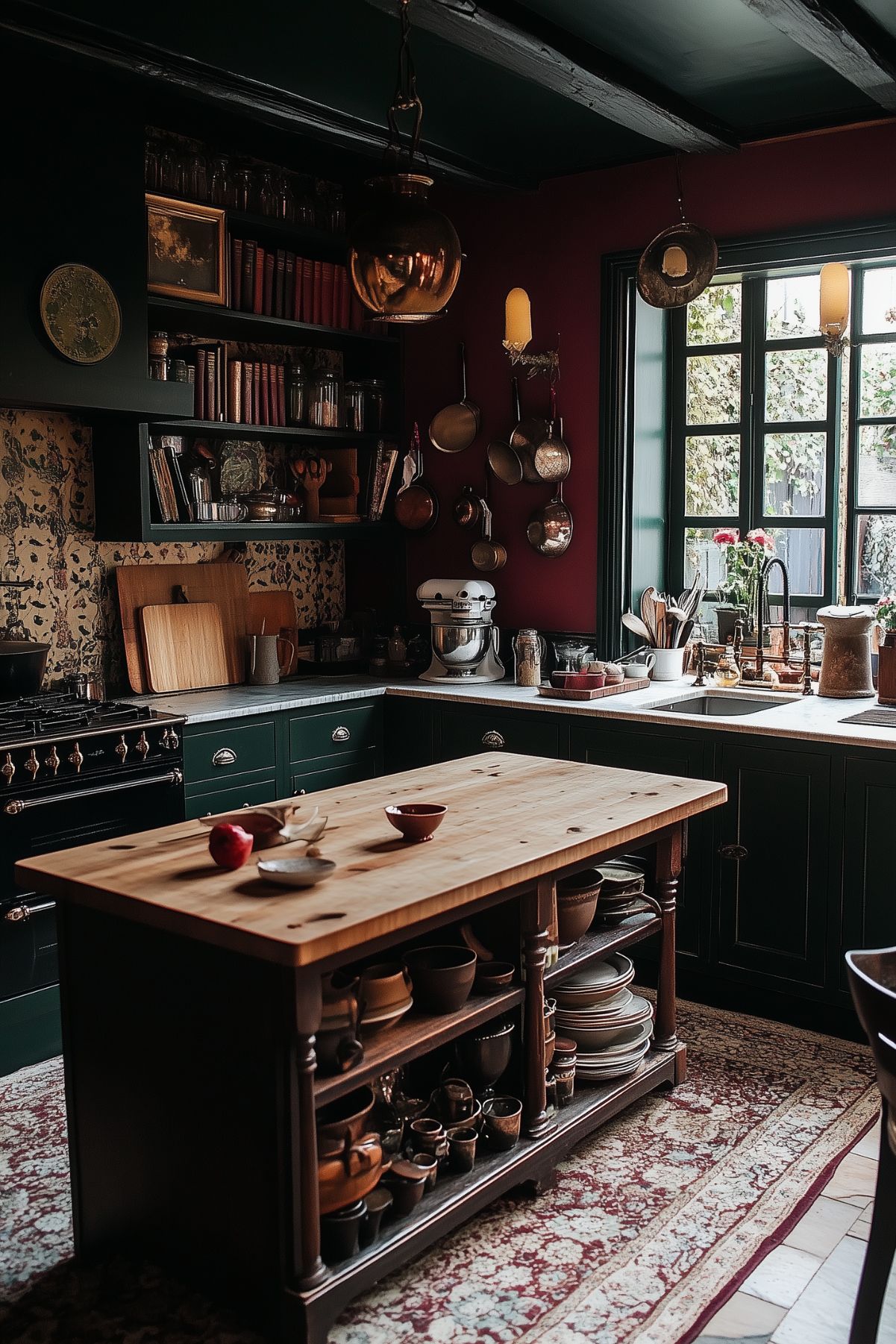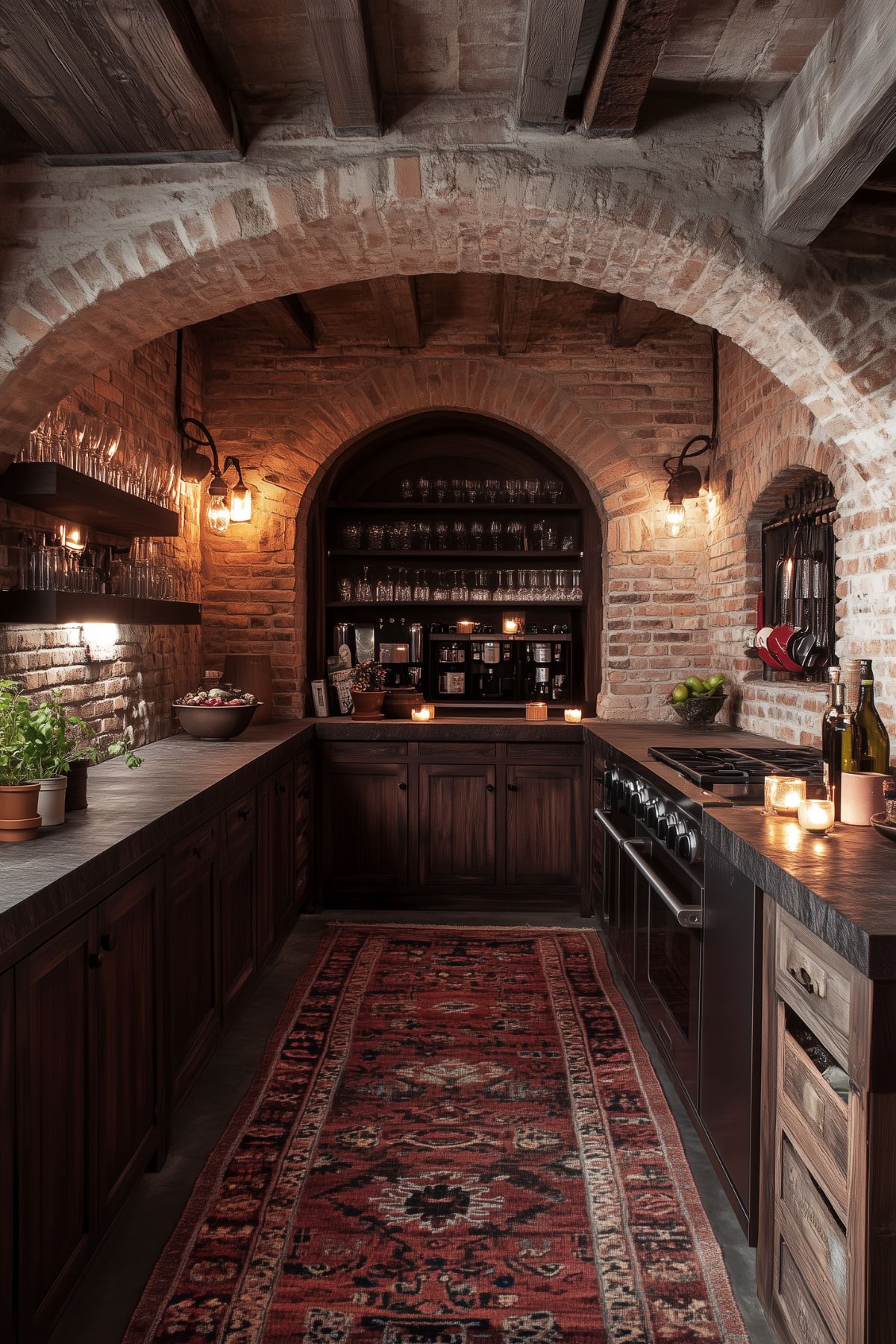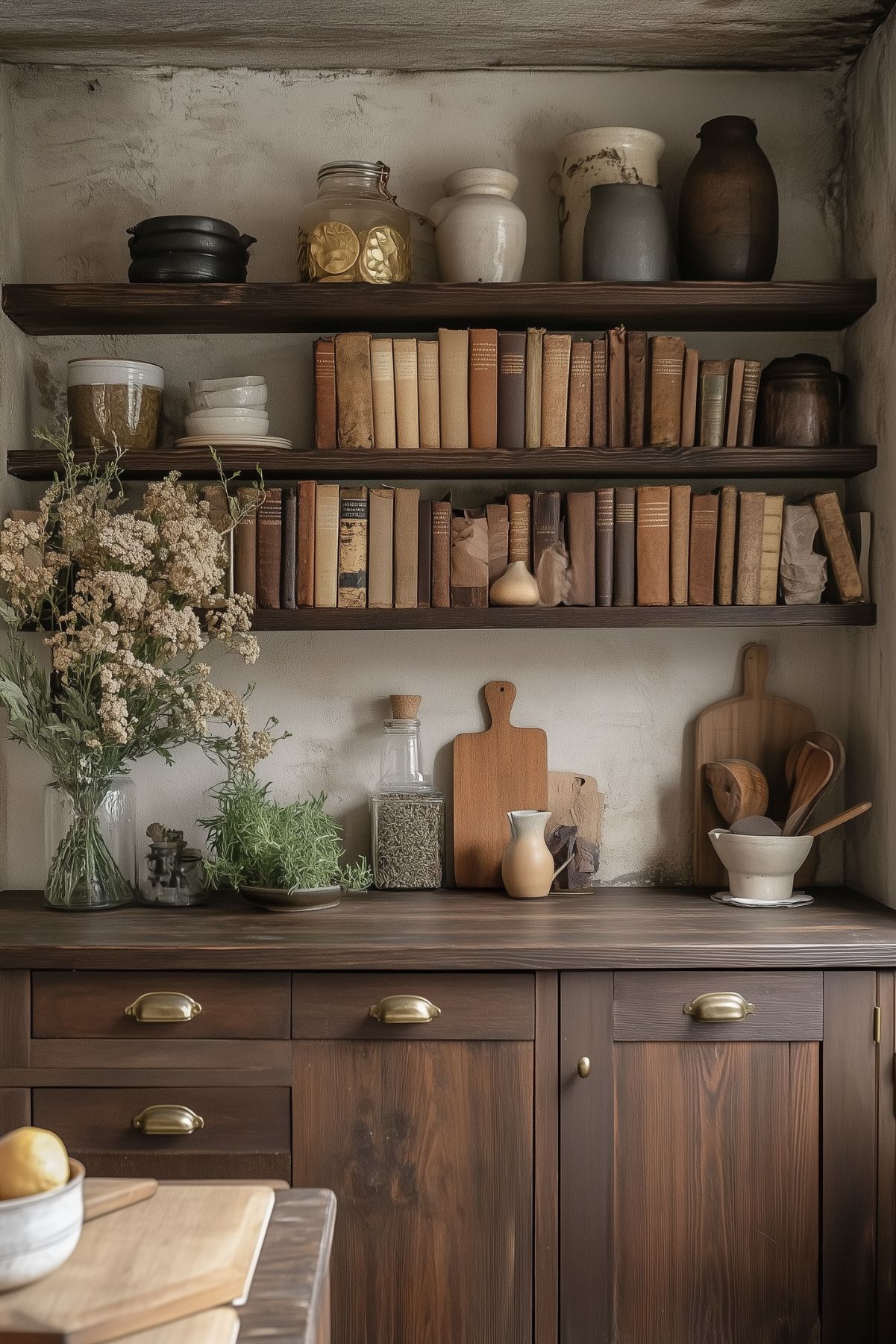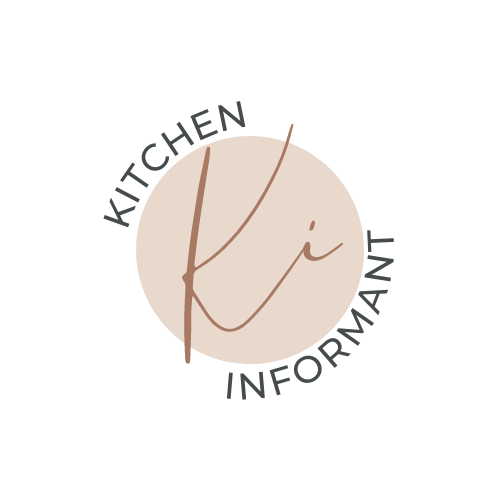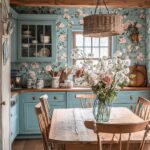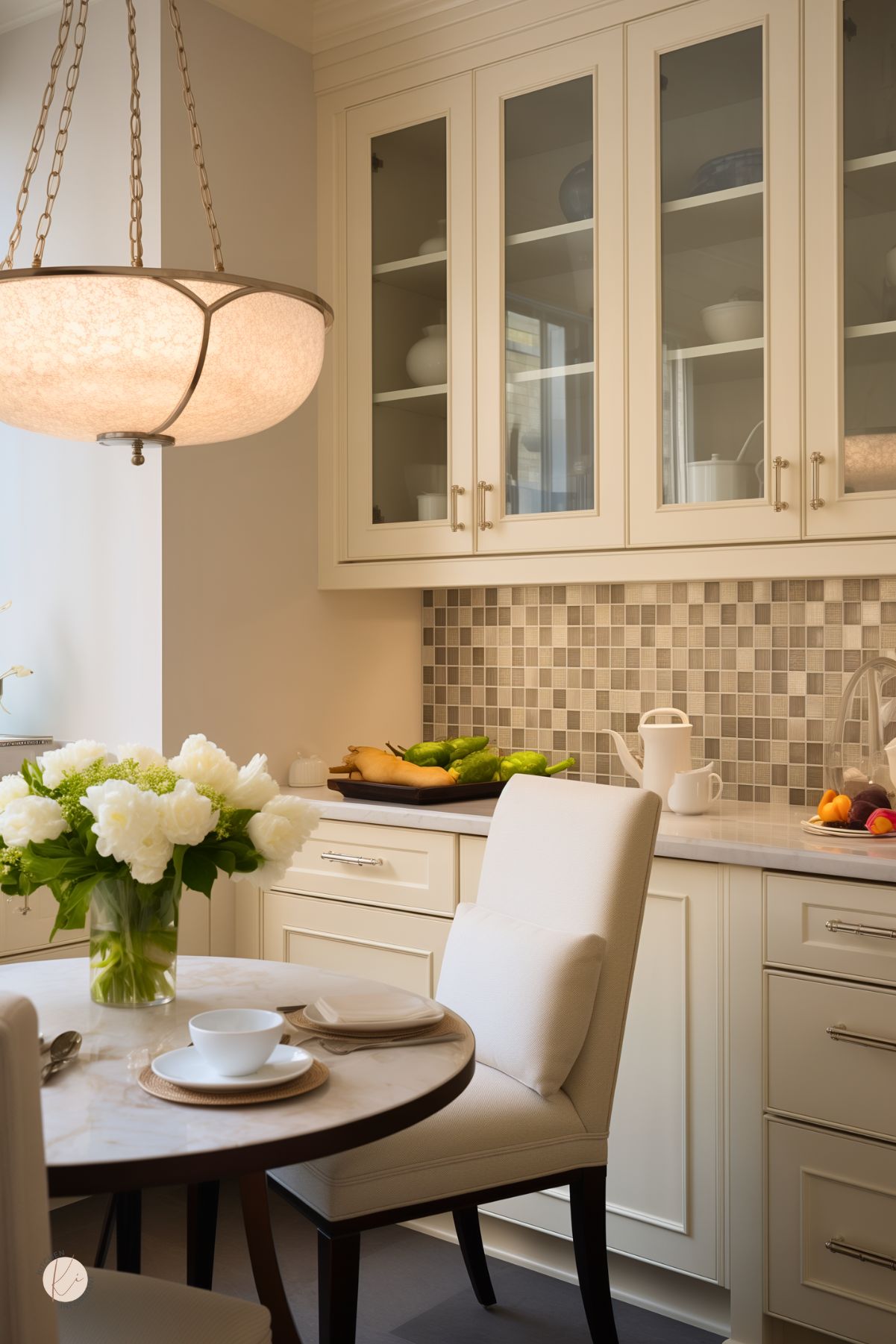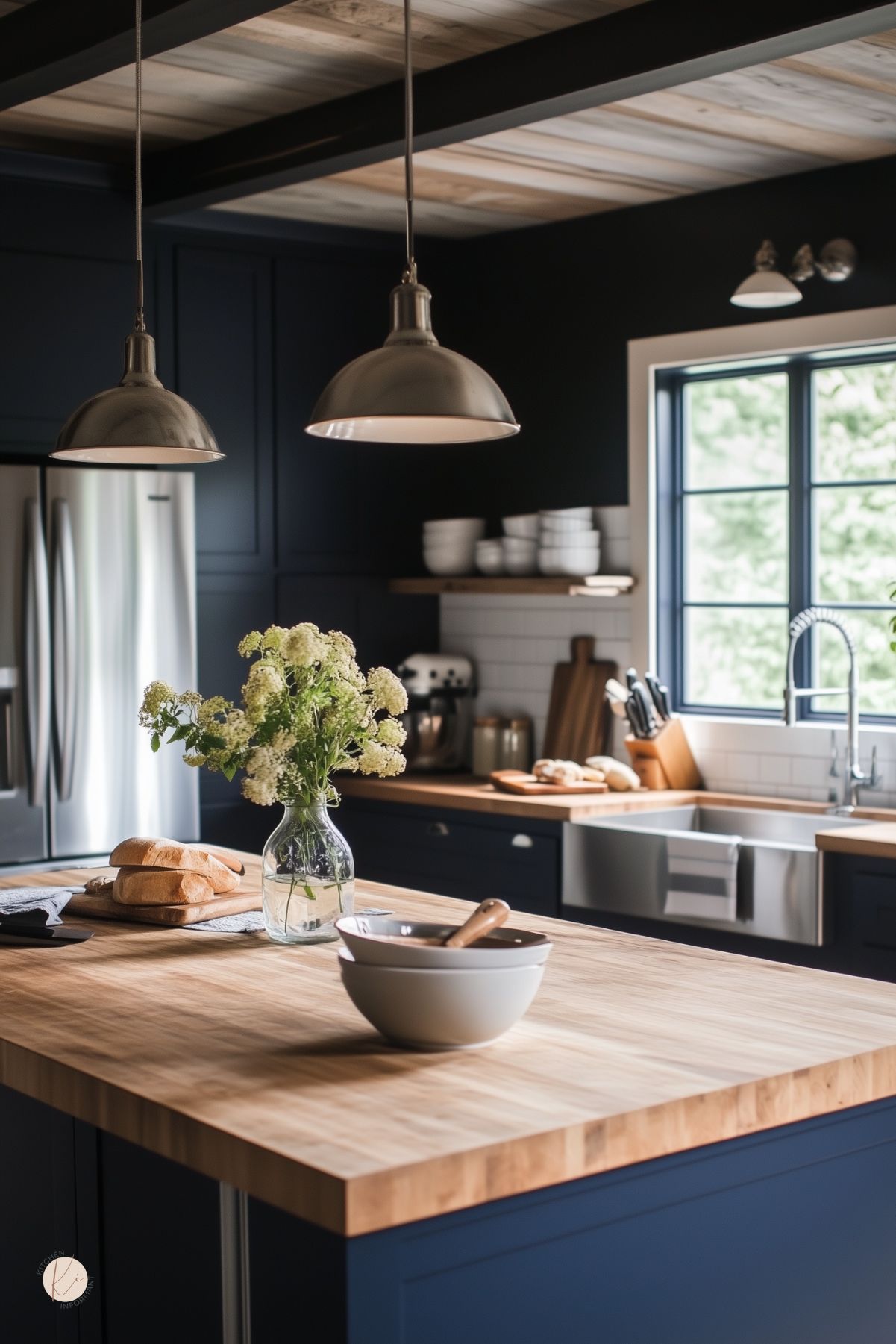Dark academia embraces a unique blend of vintage charm and intellectual depth, making it a popular choice for those seeking to create an inspiring kitchen space.
With its rich color palettes, this aesthetic can transform an ordinary kitchen into a cozy nook for creativity and culinary exploration.
The right color choices can evoke a moody yet timeless atmosphere that encourages both cooking and contemplation.

Those drawn to dark academia can find colors like deep burgundy, forest green, and navy blue to be particularly effective.
These shades not only enhance the elegance of a kitchen but also reflect a sense of history and sophistication.
By thoughtfully combining these colors, individuals can curate a kitchen that embodies the captivating spirit of dark academia while remaining functional.
In this article, readers will discover how to incorporate various color palettes into their kitchen designs.
From muted tones that set a serene mood to striking contrasts that bring energy, there are endless possibilities for achieving the perfect dark academia look.
Each color choice can add to the story of the space, making it not just a place to cook, but a place to inspire.
Exploring Dark Academia: Aesthetic Origins

Dark Academia has roots in classic literature, art, and scholarly pursuits. This aesthetic combines elements of nostalgia and intellectualism. It reflects a longing for the past while celebrating academic excellence.
Historical Influences on Dark Academia
Dark Academia draws heavily from historical movements such as the Romantic and Victorian eras.
These times emphasize emotion, nature, and intense personal experience.
The literature of authors like Oscar Wilde and the Brontë sisters inspires many elements of this style.
Additionally, the Gothic revival architecture seen in universities contributes to the aesthetic’s charm.
Old libraries, ivy-covered buildings, and dark wooden furniture create an inviting atmosphere. The overall vibe is reminiscent of age-old scholarly pursuits, where knowledge and beauty converge.
Key Elements of the Dark Academia Style
The Dark Academia aesthetic features specific elements that set it apart. Key components include rich, moody colors like burgundy, deep green, and navy.
Materials and Decor:
- Vintage Books: Stacks of classic novels line shelves and desks.
- Antique Furniture: Dark woods and intricate designs offer a timeless feel.
- Art: Old portraits and landscapes add personality to the space.
Textures:
- Velvets, wool, and leather create warmth and depth.
The combination of these elements reflects a love for learning and a passion for history.
In essence, the Dark Academia style connects a deep appreciation for culture with a desire for aesthetic beauty.
The Color Palette of Dark Academia Aesthetics
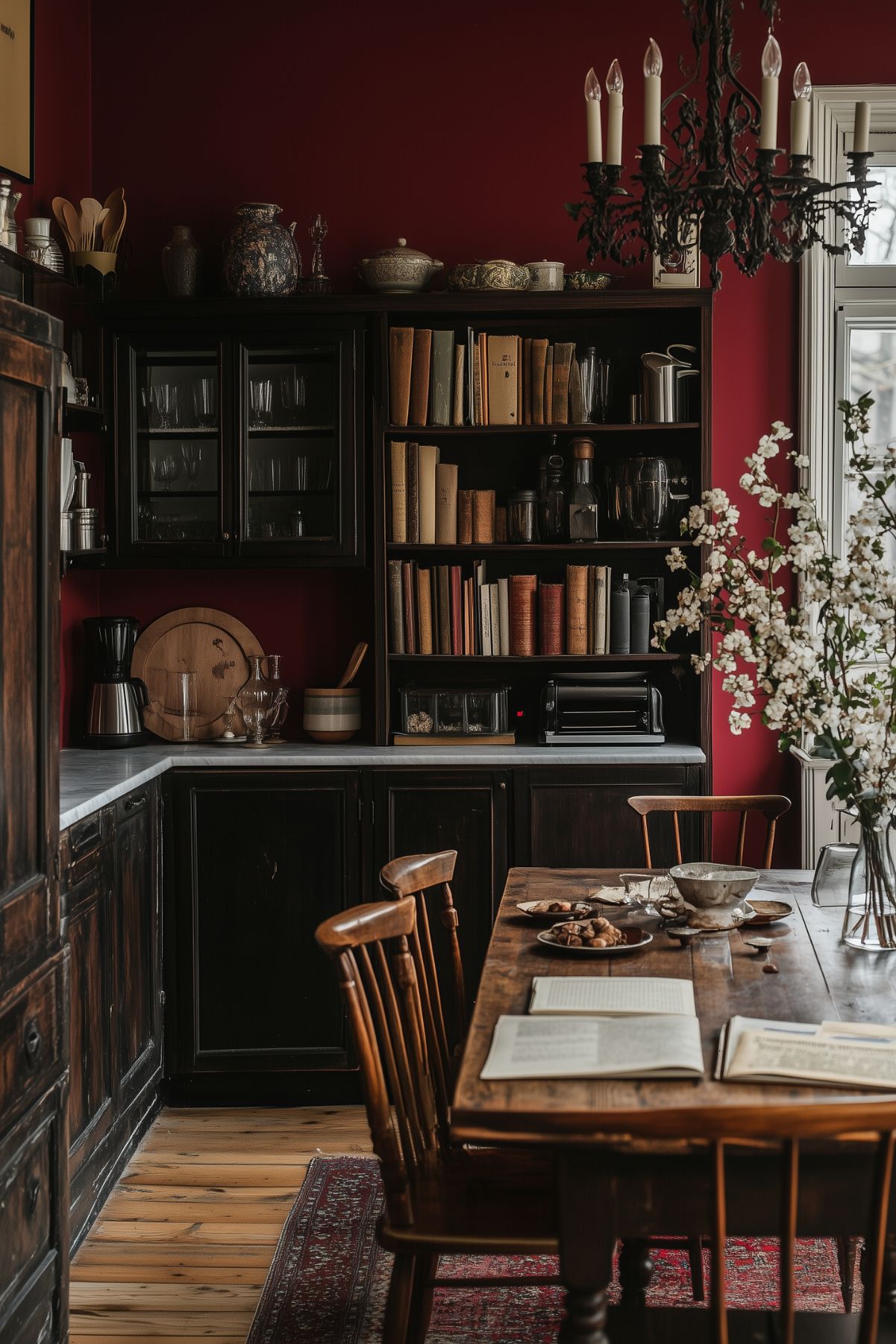
The Dark Academia aesthetic embraces a rich and moody color palette that evokes a sense of nostalgia and intellectualism.
This section explores the significance of color, classic shades typical in Dark Academia, and how to use accentuating colors and textures to create a timeless kitchen look.
Significance of Color in Dark Academia
Color plays a crucial role in establishing the Dark Academia vibe. Deep, rich tones create an atmosphere that feels both cozy and sophisticated.
These colors often reflect historical influences, drawing from the past to evoke feelings of curiosity and learning.
Shades such as charcoal, navy, burgundy, and forest green dominate, making spaces feel intellectual and inviting.
Incorporating these colors into a kitchen can enhance its character.
Dark shades make the room feel warm and grounded while fostering a connection to classic literature and artistic pursuits.
Selecting colors that resonate with one’s personality can transform a kitchen into a haven for study and creativity.
Classic Dark Academia Colors
Classic colors in the Dark Academia palette include a variety of muted tones. Here are some key shades:
- Charcoal Grey: Offers a stable, scholarly foundation.
- Burgundy: Adds a touch of warmth and richness.
- Deep Blue: Reflects the calm of twilight, enhancing sophistication.
- Forest Green: Connects to nature and vintage libraries.
These colors are often inspired by Gothic architecture and the timeless elegance of old books.
When used together, they create a cohesive look that resonates with the Dark Academia theme.
Accentuating Colors and Textures
Using accentuating colors can elevate the primary palette, adding depth and interest.
Consider incorporating metallics like brass or copper, which can complement darker hues beautifully.
Textures also play a vital role in enhancing the aesthetic.
Rich materials such as wood, marble, or velvet can add layers of comfort and sophistication.
- Soft Cream: Provides a light contrast to deeper shades.
- Dusty Rose: Brings in a subtle hint of color without overwhelming.
- Muted Mustard: Adds a touch of warmth and cheer.
Moody Ambience in Kitchen Spaces

Creating a moody ambience in kitchen spaces involves carefully selecting colors and lighting elements.
Dark tones and strategic contrasts can evoke a sense of elegance and depth. It’s important to balance warm and cool hues to maintain a comfortable atmosphere.
Creating Contrast with Dark Tones
Dark colors play a key role in achieving a moody kitchen.
Choosing rich shades like deep blue or charcoal for cabinets can give a dramatic effect. The contrast with lighter countertops and backsplashes adds visual interest.
For example, pairing navy cabinets with a white marble countertop creates depth while keeping the space from feeling heavy.
Adding dark elements like antique fixtures or vintage shelves further enhances this look, contributing to the overall dark academia aesthetic.
Integrating Warm and Cool Hues
To soften the intensity of dark palettes, integrating warm and cool hues is essential.
Warmer tones, such as burnt orange or muted gold, can be introduced through accessories like dishware or textiles.
Cool hues, like sage green or soft gray, can provide balance against the darker elements.
Using these colors in small appliance choices or decorative items can create a harmonious blend without overwhelming the space.
Lighting to Enhance the Mood
Lighting is crucial in setting a moody atmosphere.
Choosing soft, warm-toned bulbs can create a welcoming glow. Pendant lights with vintage-inspired designs add charm and focus light where it’s needed most.
Using dimmer switches allows for flexible lighting levels throughout the day.
During evening hours, softer lights can create an intimate environment, perfect for gatherings.
Combining functional lighting with decorative fixtures brings both ambiance and style to a dark academia-inspired kitchen.
Conclusion: Embracing the Dark Academia Palette

The Dark Academia palette offers a unique blend of colors that can transform any kitchen.
Rich and moody hues create warmth and depth, making the space inviting.
Key Colors to Consider:
- Deep Midnight Blue: Sets a mysterious and calming backdrop.
- Charcoal Grey: Provides a stable and sophisticated foundation.
- Forest Green: Adds a touch of nature and freshness.
Incorporating these colors can bring a timeless elegance to the kitchen.
A combination of dark cabinetry, soft lighting, and vintage decor pieces enhances the Dark Academia vibe.
Textures and Materials Matter!
Choosing materials like distressed wood or chic metals can complement the moody colors.
Fabrics such as dark velvets or rich linens in table settings add to the aesthetic warmth.
The beauty of the Dark Academia style lies in its versatility.
It can blend personal tastes with classic influences.
Whether one chooses deep colors for the walls or subtle accents, the result is always cozy and stylish.
Embracing this palette invites creativity and inspiration into the heart of the home.

